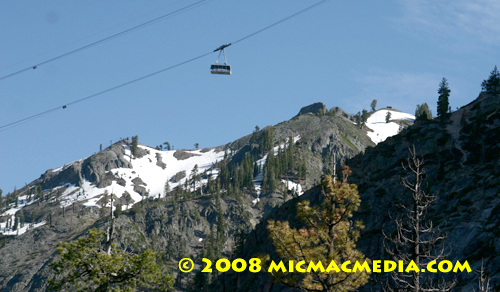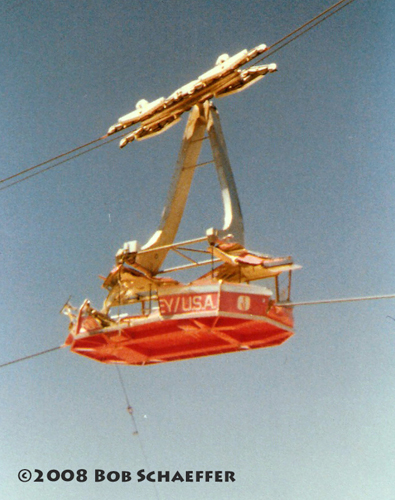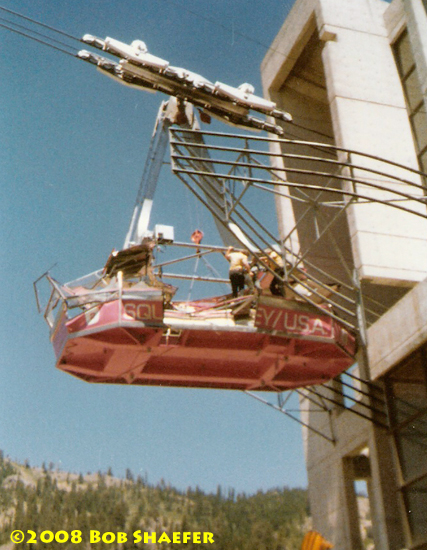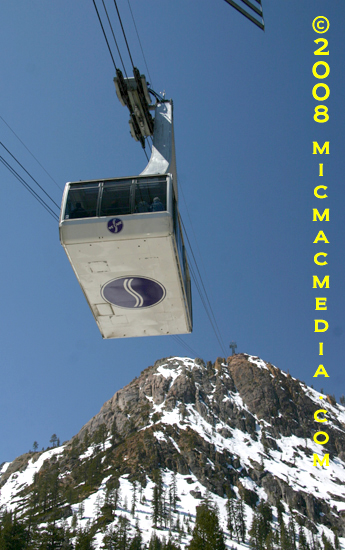 |
|
|
Follow Mark on Facebook for more stories |
||
 |
|||||
|
Tahoe Nugget #139 High Drama At Squaw Valley Yesterday, a powerful windstorm hit the Tahoe-Reno area hard. Gusts exceeding 50 mph at the Lake, 70 mph near Reno, and 100 mph on the Sierra Crest blew down trees, whipped up dirt and debris, and hindered 300 fire fighters battling an out of control wild fire 10 miles south of Reno that threatened a major highway, homes, and forced the evacuation of a school. Vigorous springtime storms are not unusual in the Sierra, but 30 years ago a nasty snow squall blew into the region with disastrous results. Late in the afternoon of April 15, 1978, gale force winds were blasting Squaw Valley when suddenly one of the ski resort's aerial cable cars twisted in the blustery wind. The freak movement derailed one of the tram's two support cables and it broke free. The descending car suddenly dropped 75 feet before the loose cable ripped through the tram like a can-opener and pinned a dozen people to the floor. One man who was thrown out of the wrecked car fell 80 feet to the snow and rock below, but survived with only a broken rib. There were 44 people in the car at the time; three were killed instantly, a fourth died shortly after and 31 were injured. It is still one of the ski industry's most historic lift accidents. There were two tram cars to the system; one ascended the mountain as the other descended. At the time of the accident, the uphill car lurched to a stop with 64 passengers on board, but caused no injuries. Over the next eight hours those passengers were lowered to safety by rope through the tram's trap door. The rescue operation, conducted in blizzard-like conditions and in the dark, was courageous, heroic, and in some ways similar to a James Bond thriller. Squaw Valley Ski Patrol personnel and 300 volunteers joined forces to save the injured and evacuated everyone from the tram, which was suspended 80 feet above the ground. Fighting the blinding snowstorm and rugged terrain, members of the Squaw Valley ski patrol were calm and professional despite the deadly carnage and extreme conditions. Several patrolmen were hoisted into the damaged tram by rope so they could administer to the injured, all of whom were in severe shock and some who were badly hurt. The rescue operation went on through the stormy night until everyone was safe. There is no doubt that Squaw's well- trained and skilled ski patrol made a huge difference and kept the mortality rate to four. After an extensive review of the accident, it was declared an "Act of God," but several modifications were deemed necessary to prevent a repeat incident. Eight months later, a new car was installed and ready for the 1979 ski season. Twenty years after the accident, in 1998, two newly modernized cable cars were installed and in operation. The new cars have safely transported millions of passengers to the upper mountain at Squaw Valley. Special thanks to Robert Schafer, who participated in the 1978 tram rescue effort, for his photos of the damaged cable car. Photo #1: Squaw Valley cable car ascends to upper mountain.
|
|||||
|




